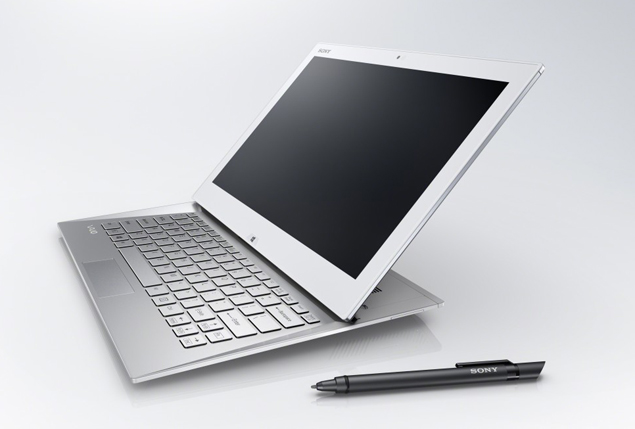

The single short leg doesn’t look as nice as the Surface’s full-width kickstand, though, and makes propping the tablet on your lap really hard. The Surface Pro 2 can go a little deeper thanks to its second kickstand angle, but I liked having the freedom to make tiny adjustments to the screen. On the other hand, the Tap 11's kickstand is fantastic - it’s easy to open and stays put at any angle from flat to about 45 degrees. The connector is so bad, I initially thought it was broken, and there were a few times I didn’t notice it had somehow disconnected until I got a low-battery warning. This loose connection is supposedly a feature, ensuring that tripping over the cord won’t knock the device off the table, but Sony should have really gone with magnets like the Surface Pro 2 or Macbook Air. The charger connector is even worse: it’s short and stubby, and never feels totally connected. All those little plastic covers protecting the ports feel flimsy and cheap, and I had a hard time snapping (or rather mushing) them back into place. The Tap 11 is sturdy and well-made, but it's held back by a few unfortunate design decisions. But could Sony be one of the first to build a true hybrid, the one device for everything in your life?Ī few unfortunate design decisions take away from the overall quality

Microsoft keeps pushing its vision, and other manufacturers are coming around. It’s also extremely thin, promises plenty of battery life, and comes in at just $799 for a Pentium processor and $999 for a more powerful Intel Core chip. This 11.6-inch tablet has a kickstand and an included, detachable keyboard. The Vaio Tap 11 is Sony's answer to the Surface Pro 2, and potentially proof that this form factor can really work. As Microsoft and others tried to build these devices, they were hamstrung by poor design, and parts that couldn't find ways to be both powerful and long-lasting - but the tide is shifting. But Microsoft’s own Surface tablet is the beacon for Microsoft’s true vision of the future of Windows 8 devices, a complete reimagining of the notebook as part traditional laptop and part tablet.

Windows 8 has inspired plenty of strange notebook designs, from the swiveling screen on the Dell XPS 12 to the flexible Lenovo IdeaPad Yoga.


 0 kommentar(er)
0 kommentar(er)
